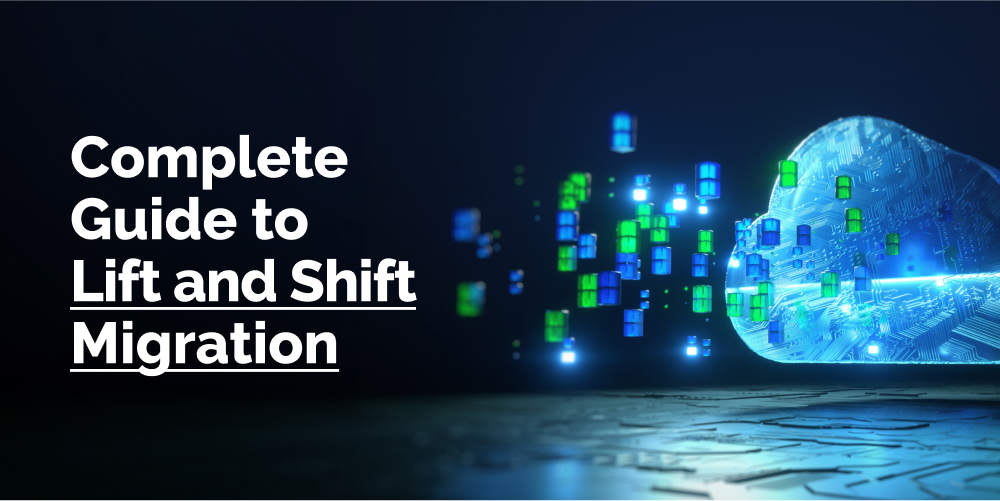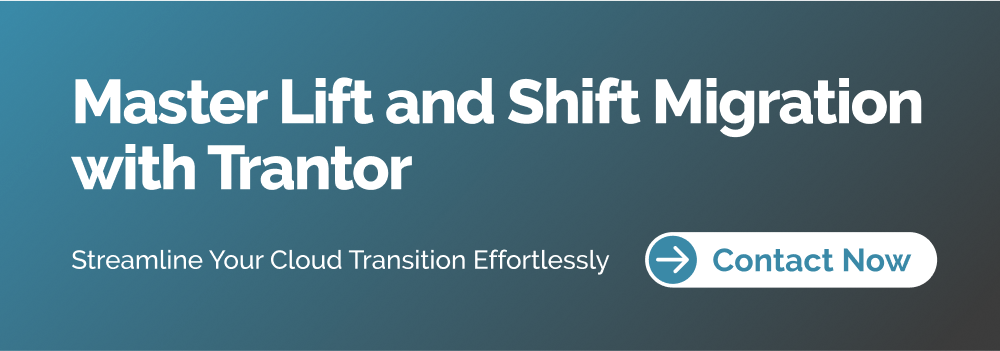Cloud, zBlog
Lift and Shift Migration: A Comprehensive Guide to Streamlining Digital Transformation

In the ever-evolving landscape of technology, businesses are constantly seeking ways to optimize their operations, reduce costs, and stay ahead of the competition. One of the strategies that has gained significant traction in recent years is lift and shift migration. This approach involves moving an existing application or workload from its current environment to a new platform or infrastructure, with minimal changes to the underlying code or architecture.
Lift and shift migration offers several benefits, including increased agility, scalability, and cost-effectiveness. However, like any major IT endeavor, it comes with its own set of challenges and considerations. In this comprehensive guide, we’ll delve into the intricacies of lift and shift migration, exploring its advantages, potential pitfalls, and best practices to ensure a smooth and successful transition.
Understanding Lift and Shift Migration

Lift and shift migration, also known as rehosting, is a cloud migration strategy that involves moving an application or workload from its current on-premises or legacy environment to a new cloud-based platform or infrastructure. The key aspect of this approach is that the application or workload remains largely unchanged, with minimal modifications to the code or architecture.
The “lift” part of the process involves packaging and transferring the application or workload, along with its dependencies and configurations, from the source environment. The “shift” refers to the deployment and installation of the application or workload on the new target platform or infrastructure.
This migration strategy is often chosen for its simplicity and speed, as it avoids the need for extensive application refactoring or re-architecting. However, it’s important to note that while the application or workload remains largely unchanged, some adjustments may still be required to ensure compatibility and optimal performance in the new environment.
Advantages of Lift and Shift Migration

- Faster Time-to-Market: Lift and shift migration typically requires less time and effort compared to other migration strategies, such as refactoring or rearchitecting. This can lead to faster time-to-market for migrated applications or workloads, allowing businesses to realize the benefits of the new environment more quickly.
- Lower Migration Costs: By minimizing the need for extensive code changes or application re-engineering, lift and shift migration can be a more cost-effective option compared to more complex migration approaches.
- Reduced Risk: Since the application or workload remains largely unchanged during the migration process, the risk of introducing new bugs or issues is generally lower compared to more invasive migration strategies.
- Preservation of Existing Investments: Businesses can leverage their existing investments in application development, testing, and operations by retaining the core functionality and architecture of their applications or workloads.
- Flexibility and Scalability: Cloud platforms often offer greater flexibility and scalability than on-premises environments, allowing businesses to quickly adjust resources based on demand and requirements.
Challenges and Considerations

While lift and shift migration offers several advantages, it’s important to be aware of potential challenges and considerations:
- Legacy Dependencies: Some applications or workloads may have dependencies on legacy systems, frameworks, or technologies that are not fully compatible with the new target environment. Identifying and resolving these dependencies is crucial for a successful migration.
- Performance and Optimization: Applications or workloads that are not optimized for the new target environment may experience performance issues or inefficiencies. Thorough testing and optimization may be required to ensure optimal performance.
- Security and Compliance: Migrating to a new environment may introduce new security and compliance requirements that need to be addressed. Ensuring that the migrated application or workload adheres to relevant regulations and security best practices is essential.
- Operational Considerations: Migrating to a new environment may require changes in operational processes, monitoring, and management practices. Proper planning and training are necessary to ensure a smooth transition.
- Long-term Sustainability: While lift and shift migration can provide a quick solution, it may not address the underlying technical debt or architectural limitations of the application or workload. Over time, this can lead to increased maintenance costs and potential scalability issues.
Best Practices for Lift and Shift Migration

To maximize the success of your lift and shift migration project and mitigate potential risks, it’s crucial to follow industry best practices:
- Comprehensive Planning and Assessment: Conduct a thorough assessment of your existing application or workload, including dependencies, configurations, and performance characteristics. This will help identify potential compatibility issues and plan for necessary adjustments or optimizations.
- Identify and Resolve Dependencies: Carefully analyze and resolve any dependencies on legacy systems, frameworks, or technologies that may not be compatible with the new target environment. This may involve refactoring or replacing certain components.
- Automate Where Possible: Leverage automation tools and scripts to streamline the migration process, reducing manual effort and minimizing the risk of errors. Automation can also aid in future maintenance and updates.
- Robust Testing and Validation: Implement comprehensive testing strategies, including functional, performance, security, and compliance testing, to ensure the migrated application or workload meets all requirements and performs optimally in the new environment.
- Monitoring and Optimization: Continuously monitor the performance and behavior of the migrated application or workload, and be prepared to optimize or fine-tune as needed. This may involve adjusting resource allocations, configuring caching mechanisms, or implementing load-balancing strategies.
- Security and Compliance Adherence: Ensure that the migrated application or workload adheres to all relevant security and compliance standards, including data protection regulations, access controls, and audit requirements.
- Operational Readiness: Develop and implement new operational processes, monitoring, and management practices tailored to the new target environment. Train staff on these new procedures to ensure a smooth transition and ongoing support.
- Incremental Migration: Consider an incremental migration approach, where components or workloads are migrated in phases, rather than all at once. This can help mitigate risks, identify and resolve issues early, and allow for gradual user adoption.
- Backup and Recovery Strategy: Implement a robust backup and recovery strategy to minimize data loss and ensure business continuity in case of any issues or failures during or after the migration process.
- Ongoing Maintenance and Modernization: While lift and shift migration can provide a quick solution, it’s important to consider long-term application modernization strategies to address technical debt and architectural limitations. Evaluate the potential benefits of refactoring or rearchitecting applications over time.
Lift and Shift Migration Tools and Services

To facilitate a successful lift and shift migration, various tools and services are available to streamline the process and ensure compatibility with the new target environment:
- Cloud Provider Migration Tools: Major cloud providers, such as Amazon Web Services (AWS), Microsoft Azure, and Google Cloud Platform (GCP), offer dedicated migration tools and services tailored to their respective platforms. These tools can automate various aspects of the migration process, including application discovery, migration planning, and deployment.
- Third-Party Migration Tools: In addition to cloud provider tools, several third-party migration tools are available, offering platform-agnostic solutions for application discovery, analysis, and migration execution.
- Containerization and Virtualization: Technologies like Docker and virtual machines can be leveraged to package and migrate applications or workloads while ensuring consistent execution environments across different platforms.
- Configuration Management and Infrastructure as Code (IaC): Tools and frameworks like Ansible, Terraform, and CloudFormation can help define and manage infrastructure configurations, enabling consistent and reproducible deployments in the new target environment.
- Monitoring and Logging Solutions: Implement robust monitoring and logging solutions to track the performance and behavior of the migrated application or workload, enabling proactive issue identification and resolution.
- Cloud-Managed Services: Leverage cloud-managed services, such as databases, caching, messaging, and load balancing, to simplify the migration process and take advantage of the scalability and resilience offered by cloud platforms.
By leveraging these tools and services, organizations can streamline the lift and shift migration process, minimize manual effort, and ensure a smoother transition to the new target environment.
Conclusion
Lift and shift migration offers a pragmatic and potentially cost-effective approach for businesses looking to migrate their applications or workloads to new platforms or infrastructures. By minimizing the need for extensive code changes or application refactoring, this strategy can provide a faster time-to-market and leverage existing investments.
However, it’s crucial to carefully evaluate the suitability of lift and shift migration for your specific use case, considering factors such as application dependencies, performance requirements, security and compliance needs, and long-term sustainability. By following industry best practices, leveraging appropriate tools and services, and implementing robust testing and monitoring strategies, organizations can maximize the success of their lift and shift migration projects.
Ultimately, lift and shift migration is a valuable option in an organization’s cloud migration toolkit, offering a balance between speed, cost-effectiveness, and risk mitigation.
In the expansive realm of technological innovation, lift and shift migration emerges as a beacon for businesses navigating the complexities of digital transformation. Its simplicity, coupled with promises of expedited deployment and cost-efficiency, renders it an appealing option in the arsenal of cloud migration strategies.
However, as businesses embark on the journey of lift and shift migration, it’s crucial to proceed with caution, acknowledging the nuances and challenges inherent in such endeavors. Legacy dependencies, performance optimization, security considerations, and long-term sustainability demand meticulous attention to ensure a seamless transition to the new digital landscape.
Trantor is committed to facilitating seamless technological transitions for its clients. Trantor embodies adaptability and foresight in navigating the dynamic IT landscape, businesses embarking on lift and shift migration must embrace these qualities to thrive amidst evolving technological paradigms. With strategic planning, adherence to best practices, and a steadfast commitment to innovation, organizations can harness the transformative potential of lift and shift migration to propel themselves toward sustained growth and success.




